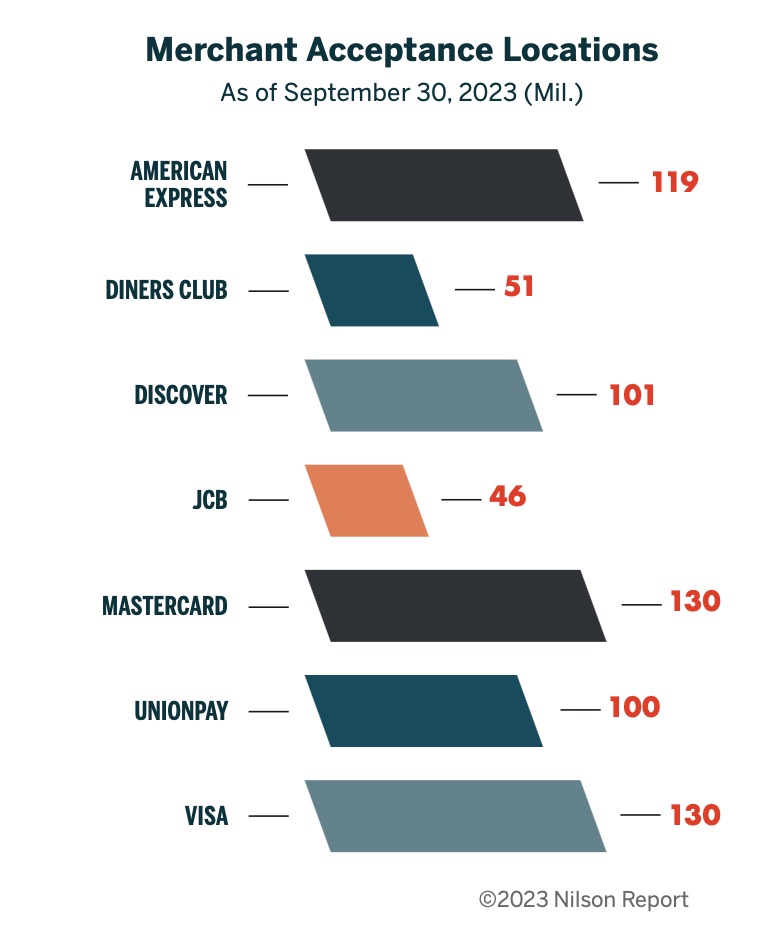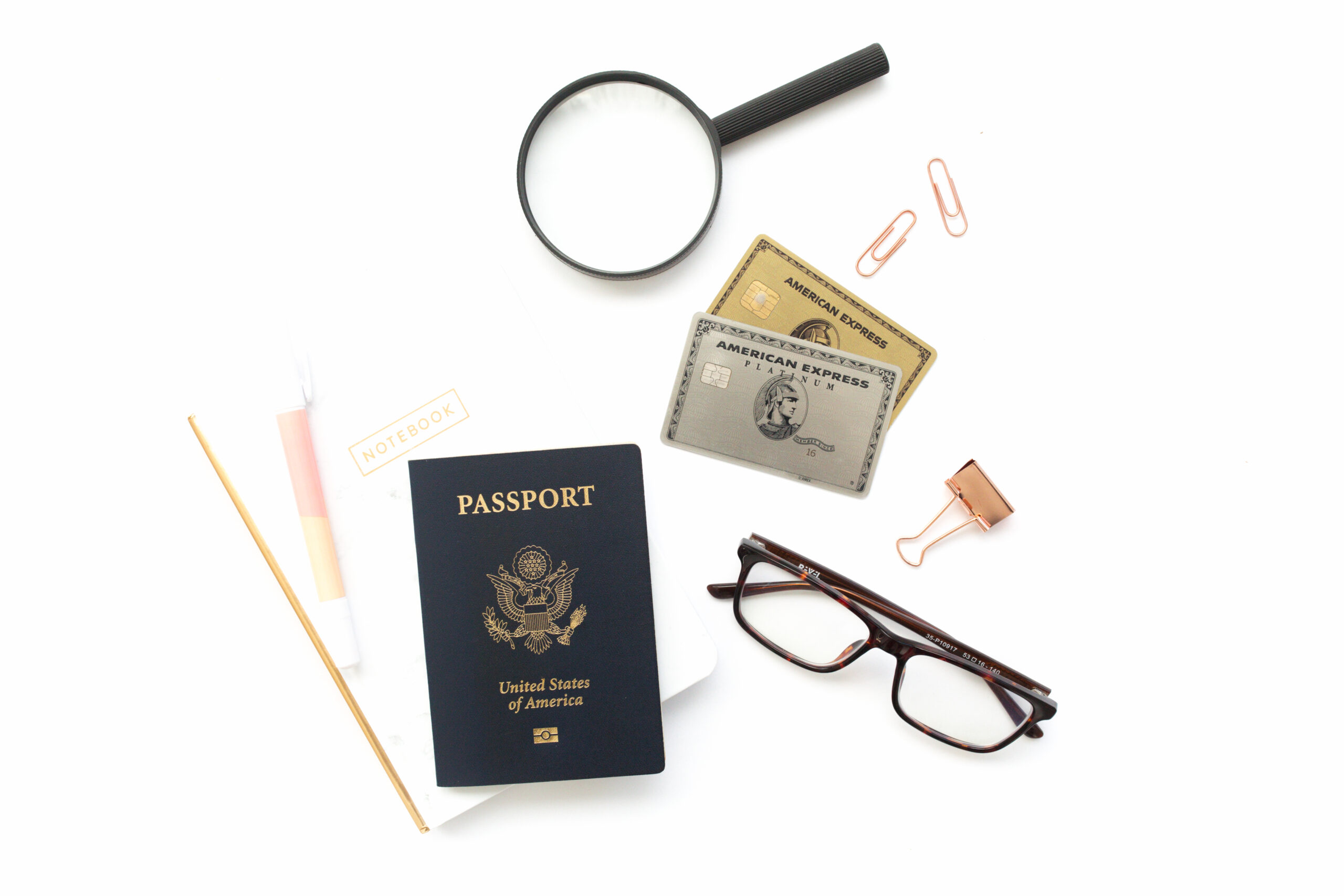Amex has some great travel rewards credit cards like the American Express Platinum Card® and the American Express® Gold Card, yet most travelers still make sure to pack a Visa or Mastercard before heading abroad. Overseas and even sometimes at home, paying with an Amex card isn't an option.
It's practically common knowledge with American Express, a widely accepted fault: Many retailers simply say “No Amex cards.” But that knock against Amex is also slightly outdated.
Amex lowered the merchant fees it charges retailers to process payment years ago, bringing them closer to its more widely accepted competitors. And since that time, Amex has steadily closed that gap with the likes of Visa, tripling its acceptance outside of the U.S. since 2017.
So while you may still want to keep that Visa card in your wallet, it's far less likely you'll actually need it in 2024 and beyond.
Are Amex Cards Accepted Abroad?
There's no guarantee you'll be able to use your Amex in every store, city, or country – there's still a way to go. But despite its ongoing reputation, it's undeniable that Amex cards are being accepted at more and more merchants worldwide. And the data proves it.
According to a recent Nilson Report, 119 million merchants accepted Amex worldwide as of September 2023. While that's still shy of the 130 million locations where Visa and Mastercard are accepted, Amex isn't too far behind anymore.
It's a massive improvement … yet it's gone largely unnoticed. Get this: Back in 2018, American Express was accepted at less than half as many worldwide merchants as Visa and Mastercard, according to that year’s Nilson Report, as reported by LendingTree.

Last year's Nilson report went on to note that much of Amex's global growth since 2022 occurred in Latin America and Asia-Pacific – two regions where the bank sorely needed to gain ground. The “don't bother with Amex” mantra is perhaps stronger in Europe, but American Express has made strides there, too.
In Spain, for example, American Express cardholders make in-store transactions 1 1/2 times more often than customers using debit or credit cards from other banks. And in recent trips to Italy, Germany, the Netherlands, and beyond, members of the Thrifty Traveler team have rarely been turned away when trying to pay with an Amex card.
Down in Mexico City, a member of our team spotted this small café happily welcoming Amex as a form of payment, as pictured on a sign with the Amex slogan in Spanish, “Don't Leave Home Without It.” Naturally, you'll still run into the occasional cash-only, mom-and-pop shops where it doesn't matter which card you're trying to use.

When I was in Vietnam last year, I was able to use my Amex cards at a variety of businesses like shopping centers, restaurants, and rideshare apps. Of course, you shouldn't expect street food vendors to accept foreign credit cards – or any cards, for that matter – when paying for your meal.
Even in the U.S., you'll still occasionally run into businesses with “We do not accept Amex” signs by the register. Not long ago, I was dining at a hot pot restaurant and went to pay when suddenly, the staff member blocked the card reader after noticing my American Express® Gold Card.
But for the most part, Amex is on par with Visa and other payment forms here in the U.S. According to an Amex spokesperson, 99% of merchants in the U.S. that accept credit cards take Amex as a payment option.
So, is Amex on par with Visa or Mastercard when traveling? Not quite. But it's also clear that the bank has grown to the point where it's a relatively reliable option both at home and abroad.
So long as you're armed with a debit card that reimburses international ATM fees and a backup Visa or Mastercard, you'll be just fine.
Related reading: The Best International Debit Card for Travel
Does Amex Charge the Highest Merchant Fees?
The entire reason why travelers believe they should leave their Amex cards at home boils down to how much it costs businesses to accept them. Retailers themselves will tell you that Amex simply charges too much for each swipe.
That information is out of date.
Closing the gap with Visa and Mastercard for broader acceptance required Amex to lower those merchant fees, and that's exactly what they've done. As of 2022, Amex's weighted average fee of 2.29% was a sliver higher than the 2.24% average of Visa/Mastercard credit cards, according to a March 2023 Nilson Report.

To be clear, Amex does still charge the highest merchant fees. But is it ridiculously more expensive for merchants to accept Amex as compared to the others? The data says no.
Which Cards Should You Bring Abroad?
When traveling internationally, the key is bringing along travel credit cards that don't charge foreign transaction fees. That department store credit card that you were pressured to open back in the day likely won't cut it. Neither will your go-to no-annual-fee travel card, for that matter.
And remember: It's best to head out on a trip prepared for the worst. Just bringing a single credit card could be a recipe for disaster. If possible, you should try to have an Amex, Mastercard, and Visa handy at all times in order to adapt to different merchants. It's also a good idea to have some of the local currency or a debit card like the one from Charles Schwab that doesn't charge ATM fees.
When in doubt, bring as many payment options with you as possible.
Bottom Line
For decades, travelers have left their Amex cards at home and told friends to do the same. “Amex isn't accepted abroad” has been a common refrain.
But in 2024, that phrase is out of date. Over the last few years, American Express has made moves to ensure it's accepted at more and more merchants at home and abroad. And that's exactly what has happened.
We're not telling you to ditch your Visa and Mastercard – it's smart to be prepared with a backup. We're simply telling you not to count Amex out of the game for your next trip abroad.






I just returned and I would say over 80% of merchants DO NOT take Amex. They prefer MC and Visa as I suspect merchant fees for AMEX are high. Used Amex a little in Rome but could use it very little in Greece.
This article is BA. We’ve been in Spain and Portugal for three weeks, and our Amex card is useless here. Out of at least 80 attempted transactions, Amex worked 3 times.
I’ve got an Amex Gold that I like to use domestically for restaurants, grocery shopping, and some flight purchases, but I almost never pack it when I’m abroad. It just doesn’t make much sense because so many places still don’t take it. At that point, why risk it or waste time asking? I just bring a Visa (usually a Venture X or Sapphire Preferred) and charge everything to that. I don’t want to run the risk of losing cards, so I usually just bring my ID, one credit card, and my debit card for ATM withdrawals.
We were exclusively in France and Italy for two months and whatever stigma AmEx had attached to it has survived, especially in smaller villages or family businesses.
Even though I saw less signs fending off the card, I saw that my wife’s Discovery card was far more agreeable to people in most places we went.
I do like your advice for the Chase Sapphire! Time to switch.
Currently in Puerto Rico. While P.R. is a U.S. territory, most of the local restaurants outside San Juan and not in resorts do not accept Amex. Neither does the small inn we stay in. Amex is still too expensive for many small businesses and local merchants outside the urban U.S.
Was just all over Japan for 16 days and 9/10 did accept AMEX , no matter size of purchase or story category
I live in Costa Rica. Been here 4 years. Hotels, supermarkets, big box stores (I’ve bought dishwashers, a motor bike, and stoves) all take AX. Don’t eat out much, so, don’t know how many take AX. Wherever I’ve tried to use it Bingo!! No problem.
My experience with a month in Europe was that my Amex was not taken very often at all. In fact, regular stores almost never took my AMEX. Hotels yes. Major purchases yes. But regular small transactions virtually never. I just gave up and use my Capital One Visa.
This was for travel through France, Germany, Luxembourg, United Kingdom, the Netherlands, Belgium, and Switzerland.
I have had the same experience before as well. Traveling to other European countries. Even in train ticket offices in all of those countries, they refused to take AMEX. Small stores just don’t like AMEX.
Good day.
While I agree with you on some points. It has been my experience that Visa and Mastercards are indeed the go-to cards almost everywhere internationally. They are a ubiquitous form of payment from Ireland, to Egypt, to Padua New Guinea, to Ushuaia, Argentina. I am a U.S. citizen working as an international pilot. I fly on 6 continents and I rarely carry cash because most merchants everywhere will accept Visa or Mastercard. I still find it quite difficult to use my AMEX card and therfore in most instances I don’t even try. The larger retailers, businesses and the like, eg. hotels, car rentals, malls or large shopping centers, more upscale restaurants etc will accept AMEX. However smaller venues even here in the U.S. will not.
I’ve been traveling for 33 years and it simply makes good sense to have a Visa or Mastercard as your preferred, go-to credit card when traveling. I’ve exchanged my AMEX cards except the platinum, for either Visa or Mastercard because of the difficulty of use. If one can obtain an AMEX, then one can most certainly obtain a Visa or Mastercard.
In Thailand it is accepted in some restaurants but it is the exception. Where we live, NE Thailand, you can forget about using AX
You may want to rethink this article. Having been in Europe continuosly for the past two years I can safely say that AMEX is not accepted in most places. They simply say no AMEX. AMEX is mot accepted anywhere in Andorra for instance. I am presently in Italy and it is very uncommon to be able to use AMEX anywhere other than most large grocery store chains. You can forget about AMEX in most restaurants in Europe. I think you should have done more research on this article. It is inaccurate.
Just came back yesterday from a trip to the Netherlands and France, and I’d say maybe 1 in 10 actually accepted AMEX, even though I asked at every place we went to.
I was just in St. Martin and almost every place was no Amex. I could use it at the big grocery store but any restaurant or shop it was a no go.